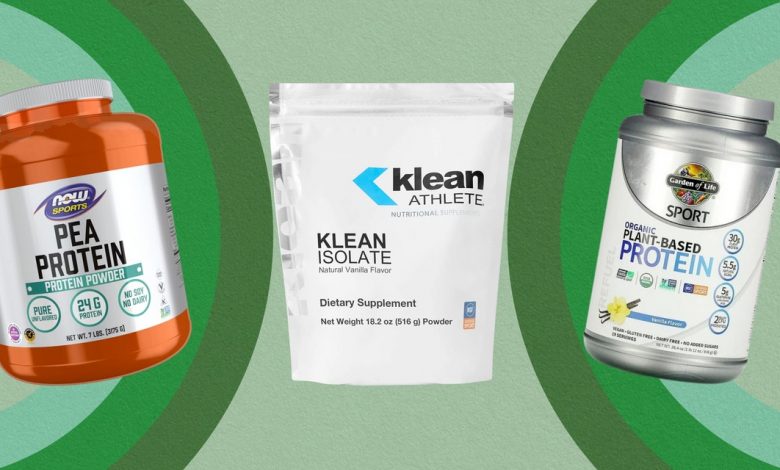9 Protein Powders That Actually Taste Good

If you do the math and realize you aren’t getting enough protein, adding a dietary supplement like a powder to your routine could help. You may also want to consult your doctor or a registered dietitian to get a clearer idea of your individual protein needs.
What to look for in a protein powder
When you start shopping for protein powders, you’ll first need to choose between animal-based powders or plant-based varieties. One isn’t necessarily better than the other, but there are a few key differences to consider.
Animal-based
Most registered dietitians consider whey—a component of milk—the “gold standard” for protein supplementation, Asche says. That’s partly because it is a complete protein, which, as we mentioned earlier, means it contains all nine of the essential amino acids that your body needs to function (in case you were wondering, those are histidine, isoleucine, leucine, lysine, methionine, phenylalanine, threonine, tryptophan, and valine). Whey is also generally easy to absorb and digest, provided you don’t have a dairy allergy or lactose intolerance, Asche says. (If you’re specifically concerned about lactose, look for powders made with “whey protein isolate” as opposed to “whey protein concentrate,” since, as SELF has previously reported, isolate forms contain next to no lactose.)
Plant-based
If you are vegan, dairy-intolerant, or prefer to eat fewer animal-derived foods, you can try plant-based protein powders instead. These options generally feature peas, beans, brown rice, and soy protein as the main ingredients, making them a great dairy- and lactose-free alternative to whey. Just keep in mind that certain plant protein sources are considered “incomplete,” says Asche. That’s why a lot of plant-based powders combine multiple protein sources, which can create a complete profile (think: peas and rice).
What to avoid in a protein powder
For the most part, what you skip comes down to your own preferences—this writer, for example, avoids most birthday cake-flavored protein powders because they always end up having an artificial flavor to me (regardless of what’s on their ingredient list). But there are a few things that experts suggest checking the label for before making your purchase.
Sugar alcohols, and other sweetener substitutes like stevia and monk fruit, are relatively common in protein powders because they don’t add many calories or cause blood sugar spikes like regular sugar. These ingredients, as well as thickeners like carrageenan, can potentially upset your stomach, causing side effects like gas, bloating, or diarrhea, Asche says. Not everyone will find these ingredients hard to digest, but it’s something to keep in mind. Plus, powders that contain real added sugar instead of artificial sweeteners (like sucralose) can be helpful in that they provide your body with a boost of protein and carbohydrates. And that combo of protein and carbs can be especially beneficial for post-workout recovery, sports dietitian Renee McGregor, RD, tells SELF.
For some peace of mind about the quality, look for protein powders that are NSF Certified for Sport or Informed Choice for Sport Certified, Jones says. These third-party tests confirm that a powder’s label accurately reflects its ingredients, and that it doesn’t contain contaminants like heavy metals, or dangerous or banned substances.
How to incorporate protein powder into your diet
The simplest way to use protein powder is to mix it with your liquid of choice and drink it—but you can get a bit more creative, too. Jones recommends blending it into smoothies, adding it to overnight oats, or even making your own protein bars. Asche adds pancakes and waffles to that list, too, and notes it can also boost already high-protein foods like yogurt. (We don’t see why you couldn’t add it to your favorite sweet treats like milkshakes, either.)
If you’re not sure when’s the best time to drink a protein shake, it’s actually pretty subjective. Jones says it’s most beneficial when you don’t have bandwidth to whip up a whole food source of protein, whether that’s for breakfast or after your workout. Asche echoes this recommendation, saying you don’t have to overthink it: “It matters more about how much total protein you consume throughout your day as a whole, versus the timing.”
Related Reading:



